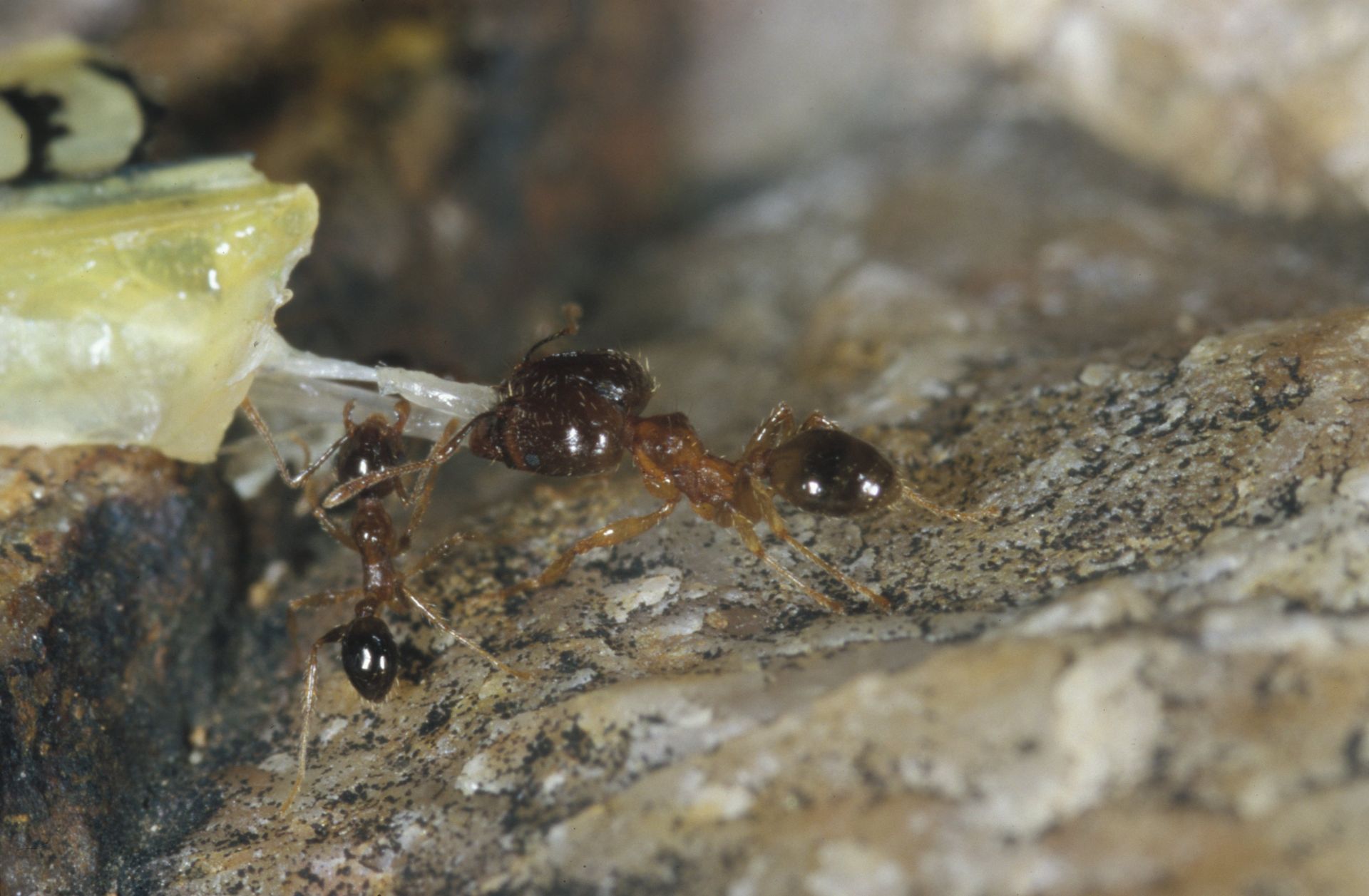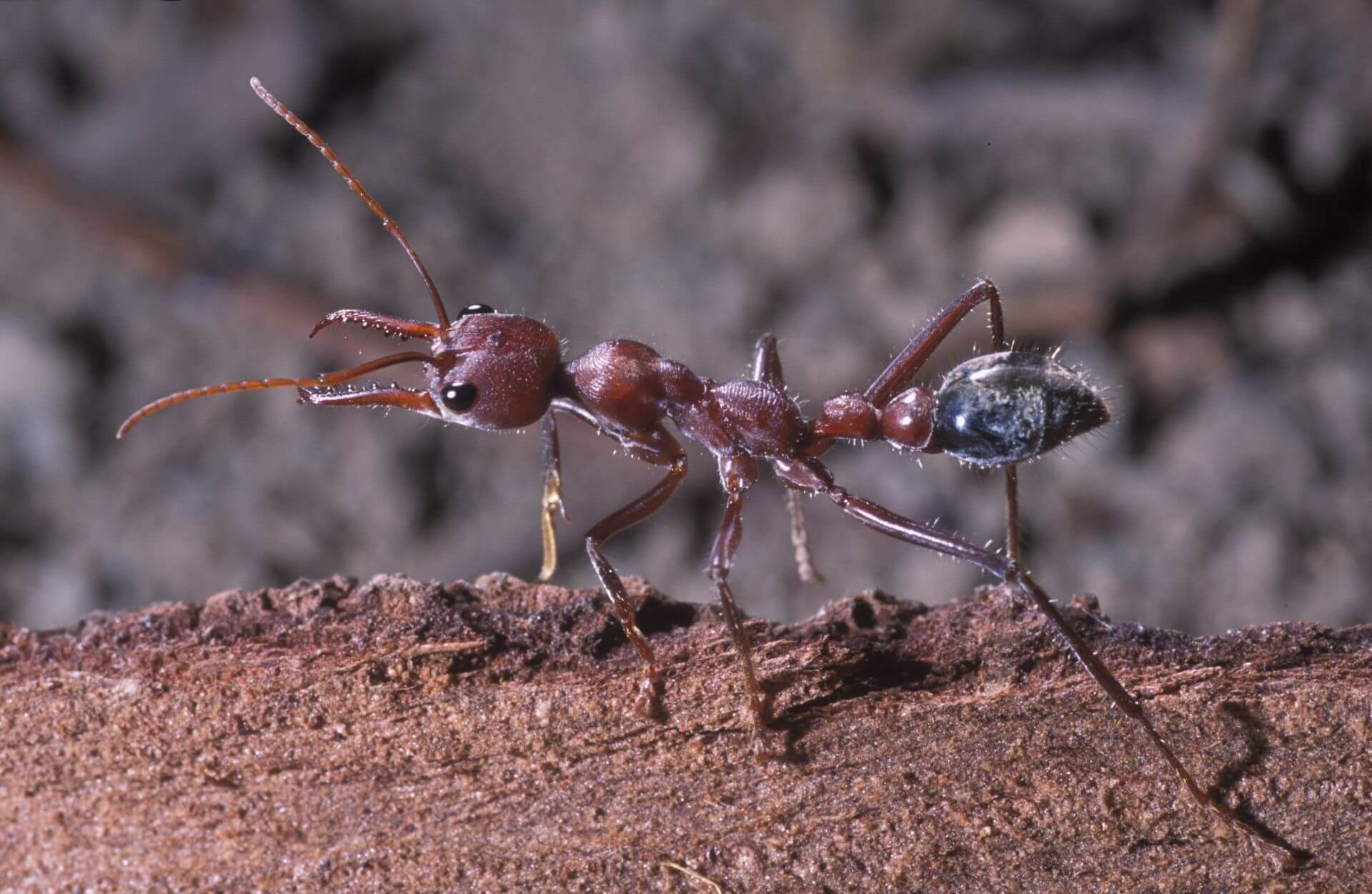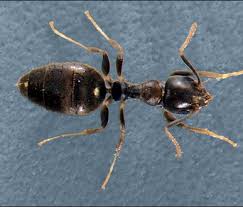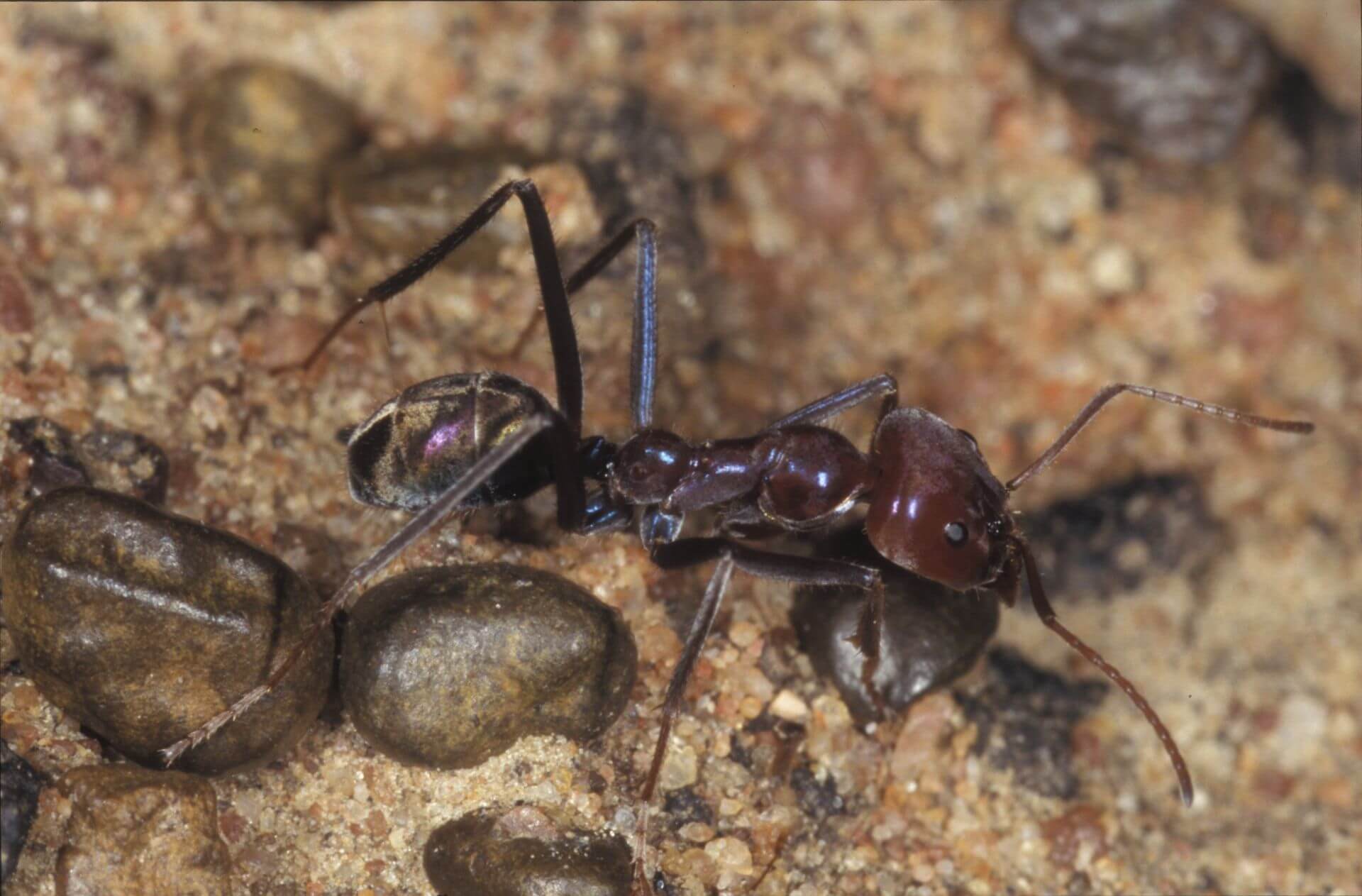
Ants have colonised almost every landmass on earth, except for Antarctica.
Appearance, life cycle and habits
Ants evolved from wasp-like ancestors about 140 million years ago. They are easily identified by their elbowed antennae and the distinctive node-like structure that forms their slender waists. They are the most frequently encountered insects in and around the average home. Ants are considered nuisance pests in the house as they enter from outside in the garden and make their way to the food handling facilities. Depending on the species of ant, their nests are made under paths and cavities. Ants feed on a wide range of foods, from those found in homes to the sugary excretions from plant bugs. Ants can also carry disease organisms. Certain species are attracted to dog faecal droppings, and to other waste products in garbage, particularly those containing organisms causing dysentery or bacteria such as Salmonella.

Coastal Brown Ant (Pheidole Magecephala)
The coastal brown ant is light-brown and about 2 – 3 mm long. They are often located in walls of houses and behind skirting and they prefer meat and fats rather than sweet foods. It is a very successful invasive species and is considered a danger to native ants in Australia. It is known as one of the hundred “World’s worst” invaders.
Greenhead Ant (Rhytidopeners spp.)
The Greenhead ant is black with a metallic green head and about 5 – 6 mm long. They have a characteristic odour and painful sting. This species lives in many habitats, including deserts, forests, woodland and urban areas. They nest under paths and feed mainly on vegetable materials. This species of ant is native to Australia and is the amongst the most widespread of all insects in Australia Greenhead ants are found in almost every Australian state, except for Tasmania.
Bulldog Ant (Myrmecia spp.)
The Bulldog ant is either black or red and range in length from 12 – 15 mm. Bulldog ants are known for their extreme aggressiveness, ferocity and painful stings. Their nests are low mounds and they are mostly found in soil, but also in rotten wood and under rocks.
Whitefooted House Ant (Technomyrmex Albipes)
The Whitefooted ant is black with pale feet and about 2.5 – 3 mm long. They nest in cavity walls, rockeries and behind kitchen cupboards.
Meat Ant (Iridomyrmex spp.)
The Meat ant has a dark-bluish body and red head and it is about 13 – 14 mm long. These ants do not sting. Their nests are low mounds of soil with gravel on the surface. They eat mainly animal products and some sweet materials. This species of ant native to Australia. It is amongst the best- known species of ant found throughout Australia and it occurs in all states except for Tasmania. Its enormous distribution, aggression and ecological importance have made this ant a dominant species.Useful tips on ants
When ants occur inside a house, the following procedures are suggested:
- Inspect the house and the area outside to locate the nest or the area from which most of the infestation originates
- Identify the species of ant and determine the appropriate control measures (identification also often assists in the location of the nest)
- Treat the nest or surfaces where ants are active, using either sprays or dusts
- Baits may be used where appropriate, or where insecticides are not to be applied
- Eliminate food particles by vacuuming and other methods of hygiene, both inside and outside the house
Chemical measures
Insecticides may be used as sprays applied to the nest or when this cannot be found, to the areas when the ants gain access to various parts of the house. When the nest is located, the eradication of the colony is usually achieved.
Temporary control is usually achieved by the use of insecticidal dusts, which may also be used as a special application in enclosed spaces such as electric power boxes and roof cavities.
Ant baits can be used successfully where insecticides cannot be used or when the nest cannot be located. The bait is collected at feeding sites, taken back to the colony by the workers, and fed to others including the queen and developing larvae. This usually results in the demise of the whole colony. The bait must be a formulation that is attractive to the particular species. Baiting procedures are usually on the label. Granular formulations of ant baits are being used more in homes because of their ability to eliminate entire ant colonies.

